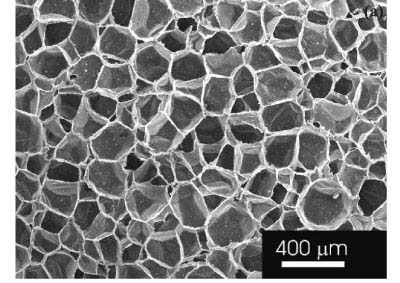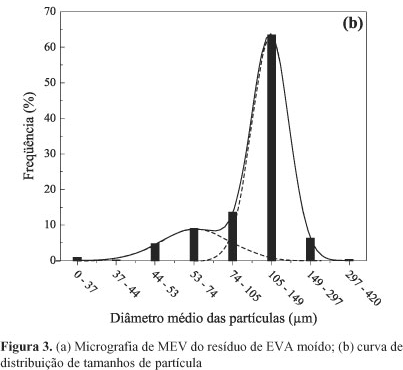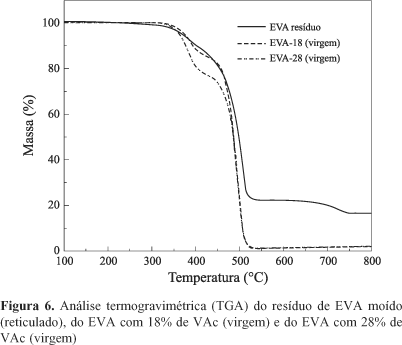Poly[(ethylene)-co-(vinyl acetate)] (EVA) has large application in the shoes industries, especially as expanded sheets, in order to produce insoles and innersoles. Studies carried out in the south region of Brazil in 2001 have demonstrated that the residues generated by shoes industries were higher than 200 ton/month, the major part of which is composed by EVA expanded sheets. With this in mind, the objective of this work was to characterize the residues of expanded EVA and also to analyze the milling cost in order to make the recycling possible. The EVA residues presented originally a microcellular structure, which was destroyed after milling, according to SEM analysis. The EVA powder was found to be composed by two phases: a crosslinked phase (75wt%) and a soluble one (25wt%). The VAc content in EVA residues was found to be around 20wt% and it is believed that the EVA had originally ca. 28wt% of VAc before the crosslinking process, according to the TG analysis. Besides, it was found that the crosslinked structure of EVA residues make them stiffer than virgin EVA used for comparison, according to mechanical tests. The milling cost was estimated to be less than 5% compared to the virgin EVA.
EVA; expanded sheets















